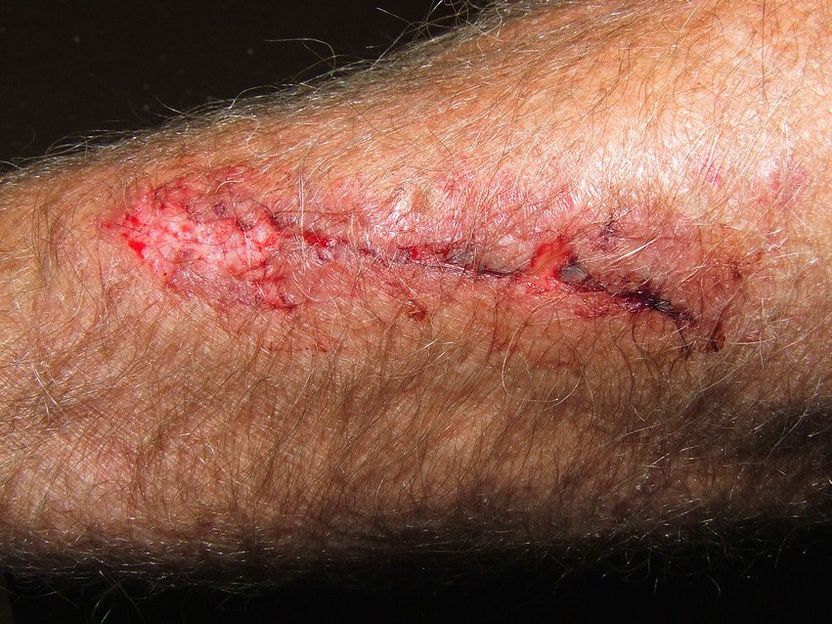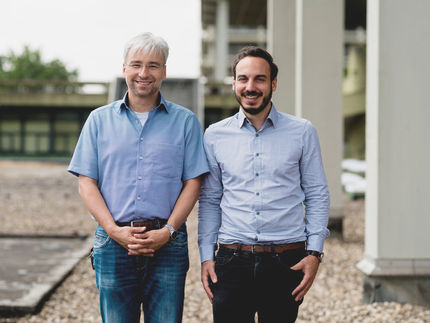Unexpected Helpers in Wound Healing
nerve cells in the skin help wounds to heal. When an injury occurs, cells known as glial cells change into repair cells and disseminate into the wound, where they help the skin to regenerate, researchers from the University of Zurich have shown.

Nerve cells in the skin help wounds to heal.
juliaharwood, pixabay.com, CC0
An essential step in skin wound healing is wound closure, which is why shortly after an injury occurs, blood coagulates and seals the wound. For the injury to be able to heal permanently, however, the affected layers of the skin need to be newly formed. For that to happen, a complex, only partially understood interplay takes place between various cell types in our skin. Together with a team from ETH, Lukas Sommer, a professor in the Institute of Anatomy at the University of Zurich, and his research group have now been able to show that peripheral nerve cells play a central role in this healing process. The research group is part of “Skintegrity,” a flagship project of the University Medicine Zurich initiative.
Glial cells change their identity
There have long been indications that for optimal healing to occur, a tissue needs to be innervated (i.e. supplied with nerves). The reason, however, remained unclear. With the help of an animal model, the researchers from Skintegrity discovered that fine nerve bundles change drastically if they are injured when a skin wound occurs. Cells along the injured nerve bundles, known as glial cells, change their original identity and are reprogrammed to “repair cells.” They thereby lose their contact to the nerve bundles and disseminate into the wound bed. “There, they distribute a diverse cocktail of factors, which support the wound healing,” explains Lukas Sommer. Through genetic experiments, he was able to prove that, among other things, these repair cells were important to help the wound close as they support the necessary reconstitution of the dermis.
Healing chronic wounds
In older people or people with diabetes, for example, wounds often heal slowly or, in some cases, not at all. Such chronic wounds usually cause serious health problems and treatment is currently unsatisfactory. Interestingly, the researchers from Skintegrity also found reprogrammed peripheral nerve cells in human skin wounds. “Now we want to work together with clinicians from the University Hospital Zurich to better characterize the wound healing factors that are distributed by nerve cells,” says Sommer. “This may lead to an effective treatment for chronic wounds in the future.”
Original publication
Most read news
Original publication
Vadims Parfejevs, Julien Debbache, Olga Shakhova, Simon M. Schaefer, Mareen Glausch, Michael Wegner, Ueli Suter, Una Riekstina, Sabine Werner und Lukas Sommer; "Injury-activated glial cells promote wound healing of the adult skin in mice"; Nature Communications; January 16, 2018.
Organizations
Other news from the department science

Get the life science industry in your inbox
By submitting this form you agree that LUMITOS AG will send you the newsletter(s) selected above by email. Your data will not be passed on to third parties. Your data will be stored and processed in accordance with our data protection regulations. LUMITOS may contact you by email for the purpose of advertising or market and opinion surveys. You can revoke your consent at any time without giving reasons to LUMITOS AG, Ernst-Augustin-Str. 2, 12489 Berlin, Germany or by e-mail at revoke@lumitos.com with effect for the future. In addition, each email contains a link to unsubscribe from the corresponding newsletter.





















































